Fisker Karma Fire Investigation Continues, EV Expert Blames Engine Packaging & Heat – Not Batteries
The investigation into a Texas house fire that apparently started in a 2 month old Fisker Karma continues, with an EV expert weighing in with his opinion that the packaging of the combustion engine that drives the Fisker’s generator was likely the cause of the fire, the National Highway Transportation Safety Administration saying it is looking into the incident, and the car’s owner and his attorneys firing back after Fisker initially implied there might be fraud or foul play.
Steampunks Rejoice, Cyclone Power Sponsored "Team Steam" Will Attempt Land Speed Record
Cyclone Power's 5th Generation Prototype Steam Engine
In my post about mercury arc rectifiers used to charge early electric vehicles, I alluded to the competition between gasoline, electricity and steam in the early days of the automobile. Reader Ryoku75 asked “What happened to steam-driven cars?” It’s my task to cover the oddball engine desk here at TTAC and we will be having a report on new engine technologies on display at the SAE World Congress soon enough once I clear some work from my day job off the to-do list, but to answer Ryoku75’s question, it just so happens that there is timely news about steam power. They weren’t at the SAE congress this year, but in recent years a startup called Cyclone Power has displayed their “Rankine Cycle heat regenerative external combustion” engine at the engineers’ convention. If Rankine Cycle heat regenerative external combustion engine is a bit of a mouthful, try “steam engine”.
This Battery Runs On Thin Air
If you want to see the future of the electric car, you have to go back a hundred years. In 1900, over a quarter of all new automobiles ran on battery. City cars? Around a third of the buggies of Chicago, Boston, and New York City were electric. They were decimated by cars running on smelly and flammable gasoline, because people wanted to drive fast and long distances. Hundred years later, little has changed. Ten to 20 years from now, something might change.
GM's Pickup Truck CNG Conversion Costs $11,000
Compressed natural gas may cost the equivalent of $1.89 per gallon of gasoline, but retrofitting your GMC Sierra or Chevrolet Silverado will cost you $11,000 – and GM still think it will save you money.
Blast From The Past: The Story Of The GM Tech Center And The Electrovan Explosion
The autoblogosphere is buzzing with news of an explosion in an electric vehicle battery testing facility at General Motors’ Tech Center in Warren, outside of Detroit. This isn’t the first time that the Tech Center has been the site of an explosion involving alternative energy. Contrary to conventional wisdom, the domestic automakers have invested many millions of dollars trying to develop alternatives to gasoline power over much of the second half of the 20th century. Almost 50 years before Toyota introduced the hybrid Prius and Honda started making the FCV hydrogen fuel cell powered car, General Motors was working on cars and trucks powered by fuel cells or batteries. Not all of that R&D proceeded without incident.
More Details On Explosion at GM Tech Center: Gases From Experimental Battery Ignited
Quote Of The Day: "Five Years From Now, When I'm Not President, I'll Buy One Myself" – Obama On The Chevrolet Volt
You heard it yourself. When Obama is out of office, he’ll buy a Chevrolet Volt and drive it himself. The Secret Service, which famously wouldn’t let Obama drive the Volt down the Hamtramck assembly line, generally protects the President for up to 10 years after they leave office – we’d assume that the “no driving” clause applies here. So Obama’s Volt may sit for a long time – hopefully it won’t brick.
Meanwhile, the DoE’s projection of 120,000 Volts produced in 2012 (let alone sold to consumers) still looks a little optimistic. GM just restarted production of the car a few days ago. Their sales target of 45,000 in 2012 has been abandoned after coming 2,300 units short of their 10,000 unit goal in 2011. GM now says that they will adjust “supply to meet demand”.
U.S. Government Ignores Obama's EV Plans, Cuts EV Purchases In Half
Last year, President Barack Obama declared that one of the “Apollo projects of our times” is the goal for the United States to be “the first country to have a million electric vehicles on the road by 2015.” Companies that made and people that bought those electric vehicles received generous government money. One holdout in the rush for EVs: The U.S. government. It did not do as its President said, and ended up with a drastic cut in purchases of electric and hybrid vehicles after the speech was delivered.
The Tesla Roadster "Bricking" Story Deconstructed
I was originally hesitant to jump on the Tesla Roadster “bricked batteries” bandwagon, and my initial story was written with a sort of cautious neutrality. Further context will be provided by the details that have surfaced in the 24 hours since the story broke. Hope you’re ready to dive in to it all.
CARB Wants 15.4 Percent Of New Cars To Be Plug-In, Hydrogen By 2025
CARB has mandated that 15.4 percent of new vehicles sold in California by 2025 must be plug-in, electric or fuel cell powered. The new mandate was supported by major OEMs and could mean as many as 1.4 million zero-emissions vehicles (as well as plug-in cars) on California roads by 2025.
Canadian Condo Won't Let Chevrolet Volt Owner Charge His Car
A Chevrolet Volt owner in Ottawa, Ontario has been blocked by his condominium board from charging his Chevrolet Volt – even though he has offered to reimburse the board for the $1 (approximately) in electricity it takes to charge the Volt at local rates.
Chevrolet Volt Misses 2011 Sales Target By 2,300 Units, Outsold By Nissan Leaf
Wamp wamp! That’s the sound of the sad trombone playing for the Chevrolet Volt, which missed its 2011 sales target by 2,329 units. General Motors hoped that the Volt would sell 10,000 units in 2011, but it was not to be.
Bloomberg reports that the bow tie brand sold only 7,671 Volts in 2011, but has plants to increase annual production to 60,000 units annually. 45,000 of those will be sold in the United States. The Volt had only been on sale nationwide for the final three months of 2011.
U.S. Congress Stops Ethanol Subsidies & Tariff on Brazilian Imports
After spending thirty years and $45 billion dollars encouraging the use of ethanol the United States Congress has adjourned for the year without extending tax subsidies to the to ethanol industry. The subsidy currently costs taxpayers $6 billion a year. A related import tariff on Brazilian ethanol was also allowed to expire. With a wide group of critics, cutting across political and ideological lines, the tax break had become unpopular in Washington. Business interests in the food and cattle industry as well as environmentalists opposed the law which paid 45 cents per gallon to fuel blenders to subsidize their costs for producing E10 gasoline/ethanol blend. The subsidy resulting in corn being diverted from feedlots and food processors to ethanol production, raising the cost of many foodstuffs. The environmental movement now opposes corn ethanol as a fuel it because it considers the fuel and its production to be “dirty”, in the words of Friends of the Earth.
A Marketer's Dream: A Car That Runs On Hot Air
Not even hot air. In this environmentally responsible day and age, unheated air will suffice to propel this car. Toyota Industries Corporation (not Toyota Motor Corporation) showed a car that is powered solely by compressed air.
Get Your Whip: Plug-In Rally At Horse And Buggy Speeds
Munich, Germany, to St. Moritz, Switzerland. It can be a scenic afternoon ride. The nicest route, shown here would take you very leisurely four hours these days. Before the car was invented, it would have taken a few days and a lot of real horses. How about with pure plug-ins? 31 participants embarked on a plug-in rally from Munich to St. Moritz. It started on August 1. It ended on August 5th. Yep, five days. When I was young, I did that in two easy days on a bicycle. The electric cars took the better part of the week.
Where Are Our Green Car Priorities?
As a relatively pragmatic person who generally chooses the imperfect-yet-achievable path rather than agonizing over the perfect-but-unattainable goal, this chart [from a fascinating Boston Consulting report, in PDF here] frustrates me. I understand why Americans choose hybrid-electric cars as their most favored “green car” technology, but from their it gets fairly crazy. EVs are fantastic on paper, but in the real world they’re still far too expensive, their batteries degrade, they have limited range, oh and did I mention that they’re freaking expensive? Biofuels, America’s third-favorite “green” transportation technology can be fantastic in certain limited applications, but the ongoing ethanol boondoggle proves that it will never be a true “gasoline alternative.” Finally, at the bottom of the list, Americans grudgingly accept only relatively slight interest in the two most promising short-term technologies: diesel and CNG. Neither of these choices is radically more expensive than, say, a hybrid drivetrain and both are considerably less expensive and compromised than EVs at this point. So why are we so dismissive of them?
GM Signs Natural Gas Development Deal, Light Duty Prototype Possible In 18 Months
Smell that? It’s the gathering scent of a new industry trend towards natural gas. Honda’s expanded its pioneering Civic GX to 50 states, Sergio Marchionne wants to replicate his Italian CNG success at Chrysler ( eventually), and now GM is jumping on the bandwagon while it’s still relatively uncrowded. The Winnepeg Free Press reports that GM has signed a development deal with Vancouver, B.C.-based Westport Innovations which could see a prototype light-duty natural gas-powered engine completed “within 18 months” if preliminary study proves promising. A Westport spokesman boasts
If both parties agree to move ahead with commercialization this would be one of the first pure OEM [natural gas-powered] products
You know, except the Civic GX which has been prowling American streets since 1998. Still, with Chrysler targeting CNG commercialization no earlier than 2017, GM could have a strong head-start on a fuel technology that promises to be a viable and promising gasoline alternative, especially if the NatGas Bill [ PDF] passes, expanding $7,500 plug-in tax credits to natural gas vehicles. And GM’s got a strong partner in Westport, which has heavy-duty commercial deals with Cummins and Caterpillar. With Nissan all-in on EVs and years ahead of the competition in terms of global EV production capacity, look for other competitors to hedge their alt-energy bets… and natural gas is rapidly becoming the most popular alternative.
Daimler Plans Volume Production Of Hydrogen Cars In 2014
The ominous Hydrogen Year 2015 is popping up again. Last year, Byung Ki Ahn, general manager of Hyundai-Kia’s Fuel Cell Group said: “There are already agreements between car makers such as ourselves and legislators in Europe, North America and Japan to build up to the mass production of fuel cell cars by 2015.” Going through the many files produced in Brussels, you find that in Europe “car manufacturers are getting ready for the commercial production of hydrogen vehicles by 2015.”
Toyota Inaugurates Gas Station
A bevy of industry figures and politicos congregated yesterday in Torrance, CA, to celebrate the grand opening of a new gas station. But it wasn’t just any new gas station …
Chrysler Goes CNG… By 2017
There’s been a recent groundswell of interest in natural gas as a fuel for cars in recent months, marked by Honda’s decision to sell a natural gas-powered 2012 Civic in 50 states, Edmunds CEO Jeremy Anwyl’s public paean to the fuel, and the EPA’s relaxation of natural gas conversion regulations. Honda alt-fuel manager Eric Rosenberg enthuses to WardsAuto
We’re the Saudi Arabia of natural gas… Demand [for the Civic GX] has tripled, and that’s actual retail demand. Traditionally, fleet has been about 50% to 55% of demand, but now it’s dropped; now 80% of demand is retail.
And since Chrysler’s new guardian, Fiat, has plenty of (well-subsidized) natural gas experience in Italy, it’s no surprise that Chrysler’s looking to get in on the action (Chrysler’s own experience with the stuff was brief). In fact, just last year Fiat-Chrysler was pushing the idea of natural gas cars as a stopgap until its first EV (the 500) arrives in 2012. Now, presumably because the desired government help wasn’t forthcoming, Bloomberg reports that Chrysler is only promising gassy goodness “by 2017.” Now there’s an interesting way to jump on a bandwagon.
EPA Streamlines Alt-Fuel Conversion Regulations
The NYT reports:
The Environmental Protection Agency has revised its alternative-fuel conversion regulations for light and heavy-duty vehicles, making it easier for manufacturers to sell conversions that are compliant with clean-air laws. The 186-page ruling provides an exemption from a Clean Air Act prohibition against tampering when converting an engine to run on alternative fuel.
In the past, a manufacturer of alternative-fuel conversion systems was required to certify its products in the same manner that a vehicle manufacturer certified its vehicles — an expensive and difficult process. The new regulations provide a way to comply with clean-air standards through streamlined testing.
In essence, the rule change creates a graded compliance structure, depending on the age of the converted vehicle, making it easier to retrofit older vehicles. Read all about it at the EPA’s website.
A Dangerously Dispassionate Look At The EV Market
One of the toughest challenges facing industry analysts right now involves determining what the market for electric vehicles actually looks like, what kind of volumes it will support and for how long. It’s a problem that I’ve hashed over at length with an old college buddy who now works at a cleantech investment firm, and let me be the first to say that it’s not an easy problem to pick apart. The number of unknown quantities and moving parts explains why opinions among money managers can vary so wildly even about relatively marginal firms like Tesla.
Luckily, Thilo Koslowski of Gartner Research [and celebrated coiner of the term “the trough of disappointment”] has dedicated himself more thoroughly to the problem, and has some startling findings to report. For example, despite the relentless pro-EV hype present in all levels of the media, Koslowski’s research shows that more consumers are actually considering buying a natural gas-powered vehicle. Looks like Edmunds’ Jeremy Anwyl was on to something when he called for an end to EV tax credits in favor of greater support for natural gas cars.
The Price Of Green: Savings At All Cost
Gas prices are getting into the area where they affect consumers’ buying decisions. According to a new Kelley Blue Book study, more than 80 percent of car shoppers say that gas prices have influenced their buying decisions. 58 percent already have downgraded. But what about switching to diesel or hybrid instead? Be careful when you do that, says Edmunds: Choosing a green alternative can cost you a lot of green.
Electric Alliance: Motors By Renault, Batteries By Daimler
Developing a new car with traditional technology costs an arm and a leg. Add future technology, and you are starting to talk real money. You need to spread the R&D costs across a lot of cars. The trouble is, massive sales of EVs are still just a dream. What to do in such a dicey situation? You look for partners. Renault and Daimler hammered out a new agreement. “Renault will supply the electric motors for the Smart and Twingo, we develop and make the batteries for both models,” Daimler’s head of research and development Thomas Weber told his hometown paper Stuttgarter Zeitung in an interview that will appear today in the print edition.
Alberta: EVs Could Kill Canada's Oil Sand Mines, And Jobs
Alberta is a province in Canada. A lot is agricultural, but what is much more important are the treasures beneath the soil. Alberta sits on more than 1.7 trillion barrels of bitumen, better known as oil sand. That’s about equal to the world’s total proven reserves of conventional petroleum. Canadians are troubled that EVs might ruin these riches.
Musk: By 2030, The Only Cars Sold In America Will Be Electric Cars
Even the most ardent EV proponents, like Nissan, think that by 2020, the market share of electric cars will be 10 percent.
Tesla CEO Elon Musk has some better predictions
Study: Ethanol Industry Must Go Back To E85 To Beat "Blend Wall"
Recently the ethanol industry has “suffered” from a problem that epitomizes the problematic nature of government subsidies. Known as the “blend wall” this obstacle was created not by negligence on the part of the industry, but by the fact that its lobbying efforts have been far more effective than its marketing efforts. The problem, in a nutshell, is that the 2007 Renewable Fuel Standard mandates a steady increase in the amount of ethanol blended into the national fuel supply, from 9 billion gallons per year (BGY) in 2008 to 36 BGY in 2022… but with gasoline consumption falling and with standard pump gasoline capped at a maximum of ten percent ethanol ( recently raised to 15% for vehicles built after 2007), the industry that’s supposed to get America off gas needs more gas to blend its ethanol into. As a study in the American Journal of Agricultural Economics puts it
Total national consumption of gasoline in the United States has been about 140 billion gallons in 2010 and is expected to fall over time due to increasing fuel economy standards. Thus, at present, if every drop of gasoline were blended as E10, the maximum ethanol that could be absorbed would be 14 billion gallons. In reality, 10% cannot be blended in all regions and seasons. Most experts consider an average blend of 9% to be the effective maximum, which amounts to about 12.6 billion gallons. U.S. ethanol production capacity already exceeds this level. Thus, our ability to consume ethanol has reached a limit called the blend wall.
The solution: well, the EPA’s ruling allowing 15% ethanol blends was supposed to fix the problem, but according to this report, that “fix” would only buy some four years before the industry is back to bumping against the blend wall. The solution?
With ethanol as the primary biofuel and either blend limit (E10 or E15), a substantial increase in E85 would be required to fulfill the mandate.
Cars Won't Run Out Of Gas. They'll Just Use Different Gas
EVs are the darling of the media. In Europe, the Leaf is the COTY. In the U.S. and Canada, the range extended Volt is the COTY. Then why are most big European manufacturers (except Renault) and most Japanese manufacturers (except Nissan) dragging their heels when it comes to wholesale electrification of their fleets? Maybe because they are working on wholesale adoption of hydrogen. As previously reported, there are agreements between automakers and governments in Europe, North America, Korea and Japan to prepare for the mass introduction of fuel cell cars by 2015. Japan is ahead of the game.
2015: Start Of The Hydrogen Age?
We are picking up more and more signs of an impending revival of assumed dead fuel cell technology.
Here is another one: The Nikkei [sub] says that the Japanese government is supporting an initiative to draw a hydrogen from a surprising source: Oil refining. And they need to be ready by 2015.
Imagine (Again): A Car, Powered By Free Sunshine
EVs are, nice wouldn’t there be (putting range and price aside for a moment) one niggling problem: The power has to come from somewhere. And currently, the exhaust that will no longer be produced by the car, will come out of the smokestacks of a mostly coal fired power plant. Wouldn’t it be nice if we could power our cars from sunshine alone? Definitely renewable. And free. Honda is trying to do just that.
EVs Get A Big Honking Bill
This weekend’s homage to the car’s electrification, celebrating deliveries of the Leaf and the Volt to normal civilians, in addition to a whole fleet of electric THINK cars delivered to the State of Indiana, would be incomplete without mentioning that EVs can be a menace to society. These things are so quiet – that they creep up on you – just like that.
As Plug-Ins Go On Sale, Japanese Can't Find The Plug
This Monday, Nissan’s all-electric Leaf will officially go on sale in Japan. All of the 6,000 Leafs scheduled to be made this fiscal year has already been reserved, reports Japan’s Asahi Shimbun. A lot of them are in the grips of pre-orderer’s remorse after a trip to their garage:
Hybrids Are A Speck On The Wall
Call me a cro-magnon cave dweller, but whenever I read these “car of the future” stories, I am reminded of a discussion I had with a Volkswagen engineer, some time in the late 70s. I was a wide-eyed copywriter and believed anything.
“I am working on the car for the year 2000,” the engineer announced.
“Wow! What will it be?” the wide-eyed copywriter asked in awe.
Will The Leaf Save Hawaii From Oil Dependency? Ho Brah ... Smokin' Da Kine?
Equal time: While Prez. Obama test-sat the Volt’s European sibling, the Ampera, in Lisbon, Nissan had its own celebrity test driver for the Leaf EV. “John Roos, U.S. ambassador to Japan, test-drove Nissan’s “Leaf” electric vehicle in Yokohama one afternoon in mid-November, just before the APEC summit got under way,” reports The Nikkei [sub]. Then the Ambassador deeply inserted his foot in his mouth. He said he was particularly intrigued by the way the Leaf was able to charge its battery with solar power, a feat he saw at a “smart-city” exhibition sponsored by the Yokohama city government. Roos then asked officials running the demonstration whether the technology could help reduce oil dependence in Hawaii. Oops, wrong question.
Pope Benedict XVI Shopping For Electric Popemobile
According to Cardinal Giovanni Lajolo, the Warlord of Vatican City, His Holiness “would certainly prefer an electric popemobile to a traditional, petroleum-powered one.” I suggest the 1976 Sebring-Vanguard Citicar!
BMW Announces Environmentally Friendly Drivetrain Of The Future
Major players in the industry think that EVs are a stopgap measure at best. Volkswagen declared that nobody wants EVs, except governments. In Japan, Toyota and Honda are talking louder and louder about hydrogen. There must be something better than plugins: A revolutionary technology that powers the car from a renewable energy source in an environmentally responsible fashion.
BMW just found what the world needs.
Sticker Wars: Leaf Beats Volt. FTC Trumps EPA
The official MPG(e) ratings for Chevy’s Volt and Nissan’ Leaf have been out for a few days. Finally, The Nikkei [sub] noticed something: Nissan’s “all-electric Leaf has gained bragging rights in the U.S. market after garnering a higher fuel economy rating than the Chevrolet Volt.” Bragging rights bestowed courtesy of the U.S. government.
EV Interest Group Is Worried: Will You Plug In?
Did you know that there’s an Electric Drive Transportation Association? It’s a group that wants you to ditch your ICE-powered car and run on battery instead. Their member list is huge. Just about every important automaker is on it. Utility companies from Austin Energy all the way to the Tennessee Valley Authority are members. Battery manufacturers, component suppliers, infrastructure developers are members. The City of New York is. Hertz is. And if things get dicey, the association can call upon their member L-3 Communications-Combat Propulsion Systems to provide fire support.
But as big as they are, they are scared. They are worried that customers may not plug in. Or, as Reuters put it, they are concerned that “the ‘range anxiety’ drivers of plug-in electric cars may suffer is preceded by anxiety over the wisdom of buying one.” And what do they do to allay these fears? Cheaper cars? Longer lasting batteries? Free charging stations?
LA Auto Show: Mercedes B-Class F-Cell Hydrogen Car
Guess What? Chicken Fat
NPR reports that
Tyson developed a diesel fuel made from chicken fat and food grease. It’s opening a plant Monday in Louisiana that can turn out 75 million gallons of the fatty fuel a year.
At the same time, they’re calling the federal government’s subsidies on ethanol… well, chicken.
GM To China: The Volt Is Coming! China To GM: Yawn
While we are all waiting for Ed’s report on the Volt, let me waste some of your time by mentioning that GM will introduce the thing in China some time in the second half of 2011. They already concede that it will be a flop.
Germans Agree On A Common Plug
Germany doesn’t have an EV yet, but they already have a standard fort he EV plug. I would expect no less from my countrypersons. Before they do anything new, they first create a standard for it. Audi, BMW, Daimler, Porsche and Volkswagen have agreed to support a connector system for the charging of electric vehicles based on IEC standard 62196-2. The five German vendors invited utility providers and other OEMs to join the group. Given Volkswagen’s monstrous market share in Europe, there won’t be much other choice for the juice.
Hyundai Joins EV Fray
Hyundai demands its fair share of a market that doesn’t exist. The Koreans are stepping up the development of EVs. Two days ago, Hyundai held a test drive event in the suburbs of Seoul. The invitees could drive a (blue is the new green) Hyundai BlueOn EV. The Nikkei [sub], who was invited, reports:
Ronn Like Hell: Scorpion Eco-Exotic Supercar Coming To China
Ever heard of Ronn Motor Company? We don’t blame you. Well, at least they have a website. They even have their own in-house chaplain. (sometimes called a “Chaplin”. As in Charley.) They have reason to pray a lot, and to keep up their good humor: At the time of this typing, their stock traded (on the pink sheets) at 6 cents. It once fetched $6.
That minor detail doesn’t deter them from announcing that their “Scorpion® eco-exotic supercar, H2GO® real time hydrogen production unit and Ronnzoil® biodegradable lubricants may soon be available in China and the rest of Asia in the coming months.” Why? Because everybody goes there.
Volkswagen Wants To Rule The Electric World As Well
When you think Volkswagen and alternative powertrains, only one kind of springs to mind, and it’s no very alternative. Diesel. They are pretty good at it in Wolfsburg. But these days it isn’t enough. Nowadays, we have E85, fuel cells, hybrids, more efficient petrol engines and many more. Volkswagen can’t afford to bet their future on Diesel. So where do they go from here? I hear California is quite nice…?
BYD's Home Invasion
Ok, so we heard that BYD is moving onto the home appliance market. Now, BYD takes development to a whole new level We hear that they will build whole homes! No drywall comments, please, these are environmentally friendly homes. China’s electric car manufacturer BYD Auto teamed up with California’s KB Home to build new energy homes in Lancaster, California. The first-phase construction of the project has recently been completed, Gasgoo says.
And Now: Peak Lithium
If you want to play the commodities, forget pork bellies, soybeans or gold. Get into lithium. Not to treat the bipolar disorder exposure to the commodities market could trigger. Lithium to power cars. The Japanese Ministry of Economy, Trade and Industry figures that global lithium demand will more than triple from about 92,000 tons in 2010 to 310,000 tons in 2020. Who’s gobbling up the stuff? The automobile industry is expected to use 60 percent of the global lithium supply in 2020, up from less than 5 percent this year. No wonder there is a run on the material.
Without EVs, Chrysler Gets Gassy. Will Washington?
Today, natural gas is a rational alternative to gasoline that can provide a near-term environmental solution on the road to vehicle electrification. It is the most effective solution, in terms of costs and timing, to lessen this country’s reliance on oil
Chrysler/Fiat CEO Sergio Marchionne tells the Detroit News that despite not having an electric vehicles in the works until 2012 (can you believe ENVI was just vapor), Chrysler can sell environmentally-friendly vehicles sooner than that. After all, Fiat sells a grip of natural gas-powered vehicles in Europe (130,000 last year), offering the alt-energy drivetrain on nearly every model. Of course, there’s a hitch. Or three.
The Charge Of The Light Brigade: Charge EVs, Charge!
Japan appears to be serious about EVs. Evidence: Japan’s increased focus on chargers. The hard part of EVs is not to build them. The tough issue is where to charge them. And how quickly. Whether you live in Manhattan or Tokyo: As a city dweller, you hardly can put a charging station on the street or into the underground parking garage. The average suburbanite in Tokyo already has a hard time just finding a parking space (proof required if you want to buy a car). A charging station? What charging station? So the Japanese are busy building them. No wonder: 67 percent of the Japanese live in cities. (In the U.S.A. it’s even more: 82 percent.) Who’s leading the charge for chargers?
The Truth About EVs: They Will Be Nuclear Powered
“I want to make nuclear power generation ‘visible’ through electric vehicles,” says Takafumi Anegawa, a former nuclear engineer who works for Tokyo Electric Power Co. He thinks that “electric cars are the best tool to help people understand the importance of nuclear power,” reports The Nikkei [sub].
Nissan's Leaf Sold Out Already
Remember that the Google seismometer registered tectonic movements at Nissan’s future plug-in, the Leaf? In Japan, it rocks. Nissan planned to make 6,000 of them in the Fiscal year ending on March 31, 2011. On April 1, they started taking pre-orders. Yesterday, Nissan had received advance orders for 6,000 units, says The Nikkei [sub]. Sales target met, long before the car will go on sale in December.
Hyundai-Kia Jump On The Fuel Cell Bandwagon
With Honda and Toyota suddenly taking hydrogen fuel cells seriously, Hyundai-Kia is jumping on the bandwagon. Byung Ki Ahn, general manager of Hyundai-Kia’s Fuel Cell Group tells Autocar
There are already agreements between car makers such as ourselves and legislators in Europe, North America and Japan to build up to the mass production of fuel cell cars by 2015. Hydrogen production capacity and refuelling infrastructure will be improved. Pilot-scale production of 1000 fuel cell cars a year will begin for us in two years. Our first cars won’t be fully commercialised [they will probably be leased , not bought outright] but they will allow us to make the final stages of development progress before we begin commercial production of around 10,000 hydrogen cars a year in 2015
Be Careful Of What You Wish For: That Electric Car Could Take Your Job Away
Throughout the bailout bonanza, we were told that the car industry means million of jobs. True enough, before the money was doled out, we learned that auto-related industries employ 3.1 million people around the country. Now, the government is paying big bucks for electric car development. From Tesla all the way to Nissan, the industry is getting $ 25 billions of DOE loans, conditional on the development of advanced vehicle technologies. Which usually means electric cars. What’s wrong with that picture? If successful, it could cost a big chunk of those 3.1 million jobs.
Toyota And Daimler To Start Fuel Cell JV? Not Exactly
Toyota definitely keeps us on our toes. Last week, the tete-a-tete between Toyota and Tesla had the world speculating about an electric push by the world’s largest auto maker. That was last week. This week, it’s hydrogen.
China To Electrify Their Car Market With Cash
If you listen to the commentators, you’ll believe that tax breaks and stimulus measures are the sole reason for China’s car boom. It turned the country into the #1 car market in the world. What’s more, the boom continued unabated in 2010. Wonks are worried that the market will crash when the stimuli are withdrawn. Don’t worry. There will be new ones. This time, for electric cars.
Announcing the 10549 MPG Car
This car won’t have a problem with CAFE rules. Around the world, Shell is conducting Eco-Marathons. The mission: Who gets the farthest on just one liter of fuel. Team Polyjoule from France’s Nantes Polytech turned a quart of gas into 4,414 kilometers, reports Das Autoshaus. If I didn’t make a mistake in my calculation, that’s 10549 MPG. More or less. Staying the whole 4,414 km in the coffin-like contraption should receive an extra prize.
Meanwhile, Back At The Farm: Ford Promises Flex-Fuel Bumper Crop
As TTAC readers well know: There is a huge E85 flex-fuel loophole in the new federal fuel economy CAFE standards. Ford will drive right through that barn door-sized hole.
By the end of this year, Ford wants to deliver 370,000 flex fuel vehicles, a number which they can trade against fuel oinkers. Let’s review: A flex-fuel vehicle is one that is capable of running on E-85. But it doesn’t have to. It can also run on straight gas. Or on any mixture of the two fuels. As long as it’s E85 capable, it counts at least for a Peppermint White Chocolate Mocha at the DC CAFE.
And Now, The Charger Wars
Did you ever arrive in a foreign country, and the plug of your battery-depleted cell phone did not fit? Or worse, it did fit, and the charger went up in smoke? That’s nothing compared to the impending EV disaster. Buy an EV, and you will find yourself between the battle lines of plugs, voltages, and technologies. Imagine the horror: Guided by your GPS, you limp into a charging station on the last watts in your battery, and their round plug doesn’t fit your square socket.
Germans Are Electro Skeptics
Germans are ready to buy an electric car. Under conditions: The car must come with a justifiable price, and with the performance one expects from a common ICE. In other words: Forget about it. Nein.
China's Chery Picks Better Place. Possibly
Shai Agassi’s Better Place possibly clinched a possibly better deal than having three taxis running around in Tokyo. Possibly.
According to the Financial Times, Better Place signed a memorandum of understanding with China’s Chery “to develop prototypes for electric vehicles to be used in regional sate-sponsored pilot projects.” This could give Better Place access to what the FT calls “potentially the biggest future market for battery-powered cars.”
The system remains the same: switchable batteries that will be swapped at charging stations faster than you can swap-in the extra battery of your camera. If you can find it. Israel and Denmark are running tests. But these are tiny countries, and this is China.



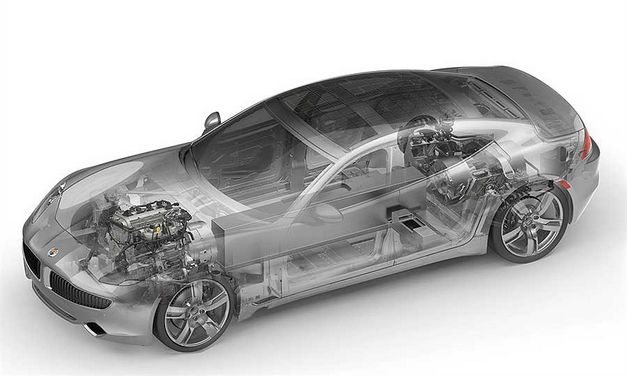
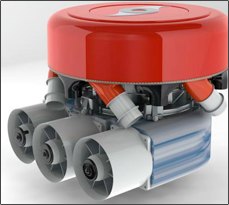

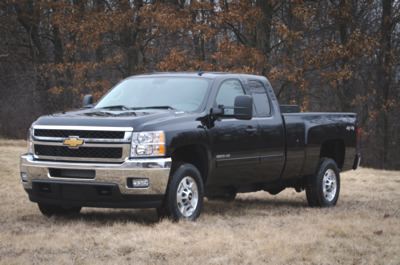
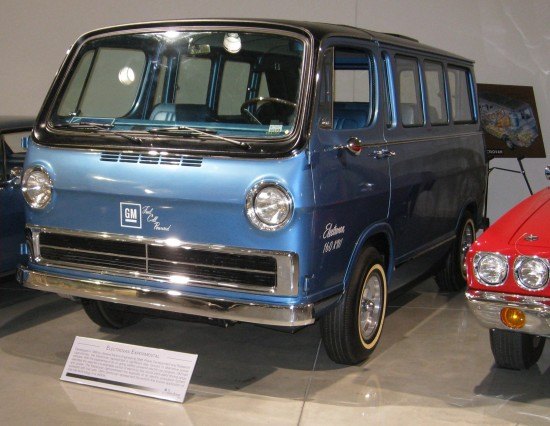
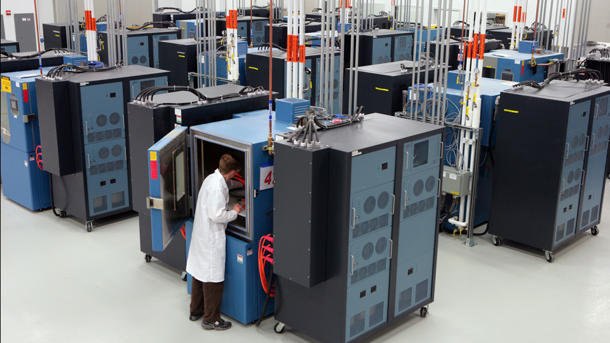
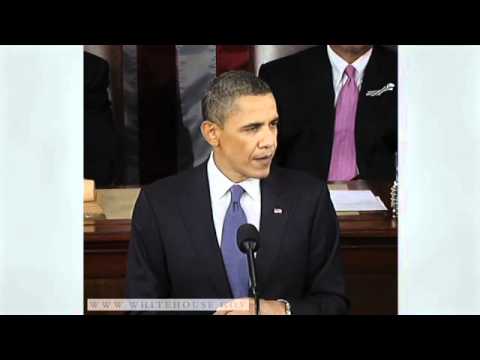

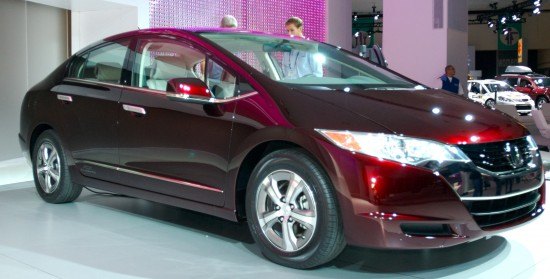
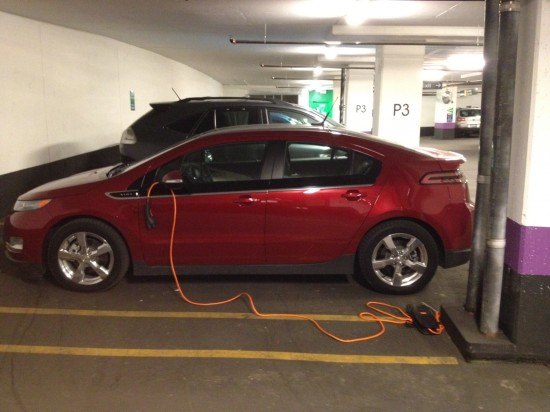
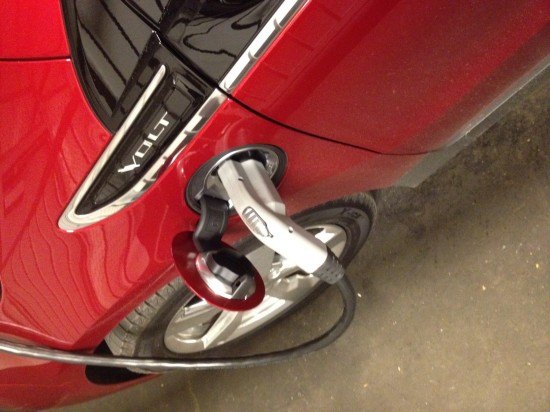

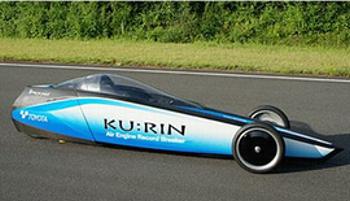




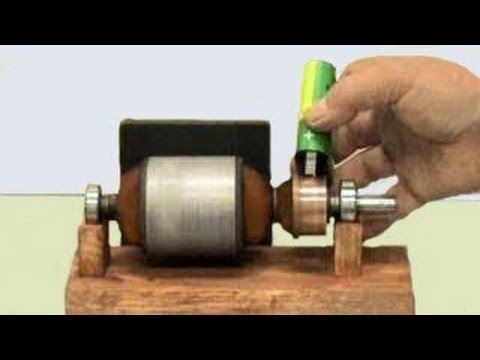







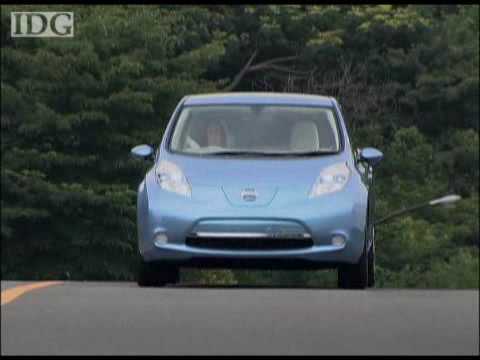

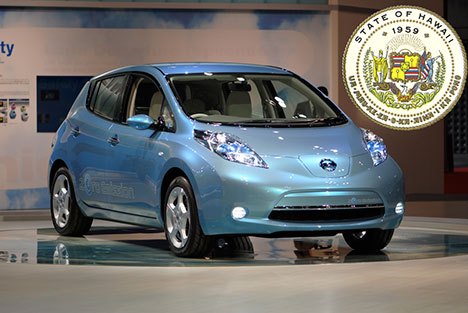





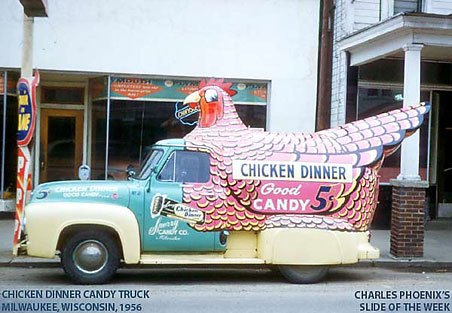


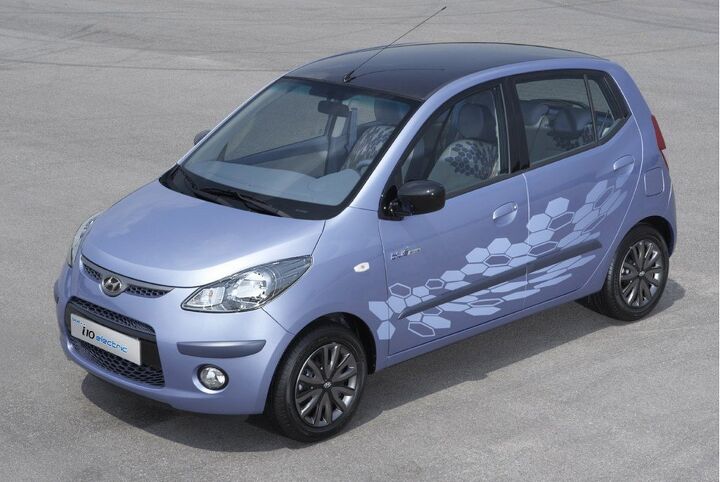

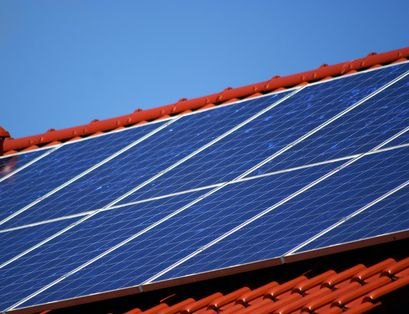
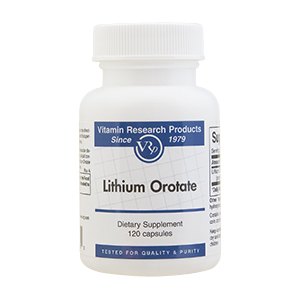


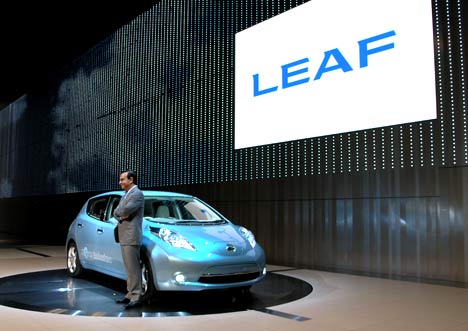



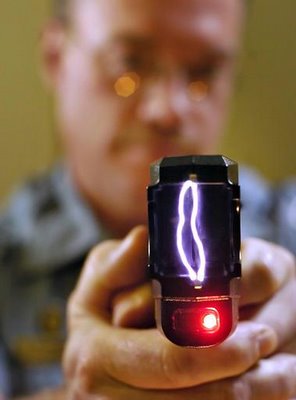


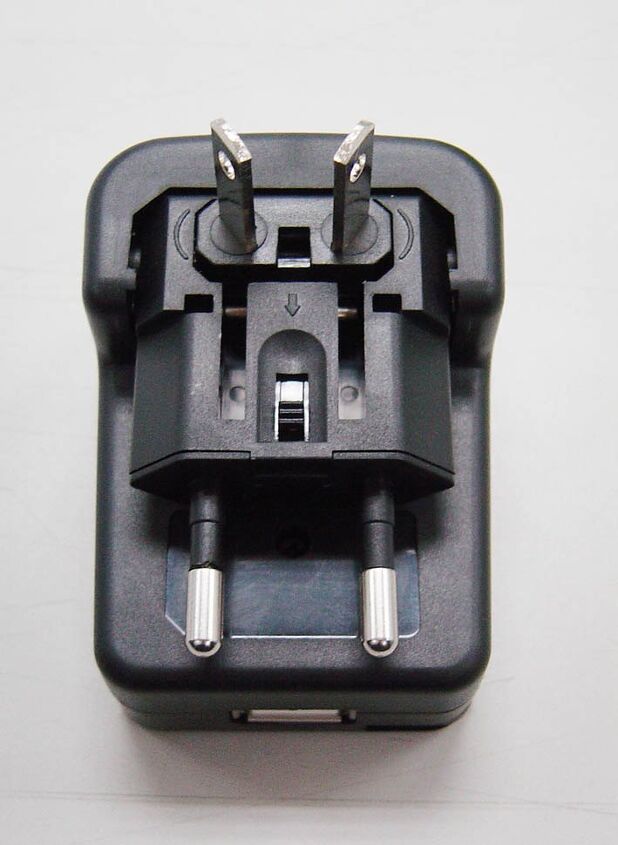
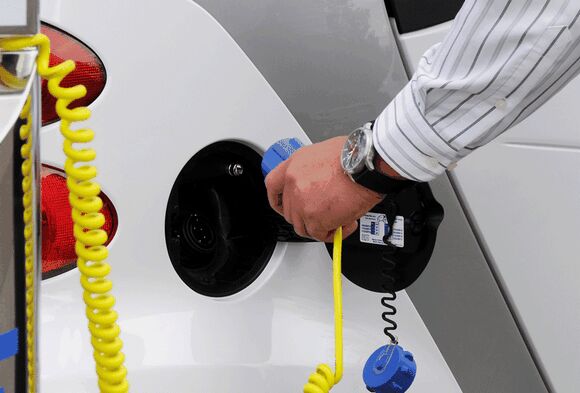
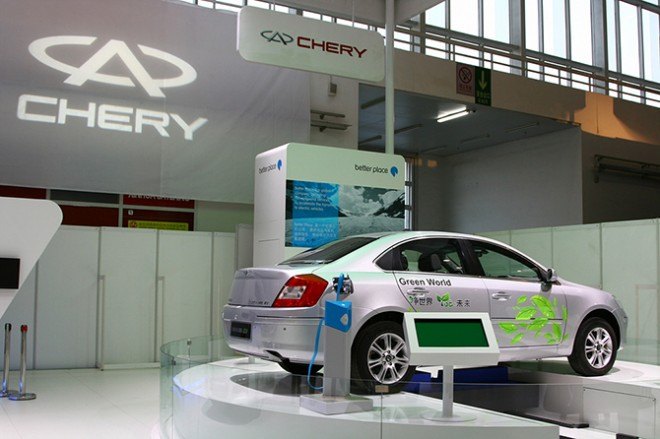












Recent Comments